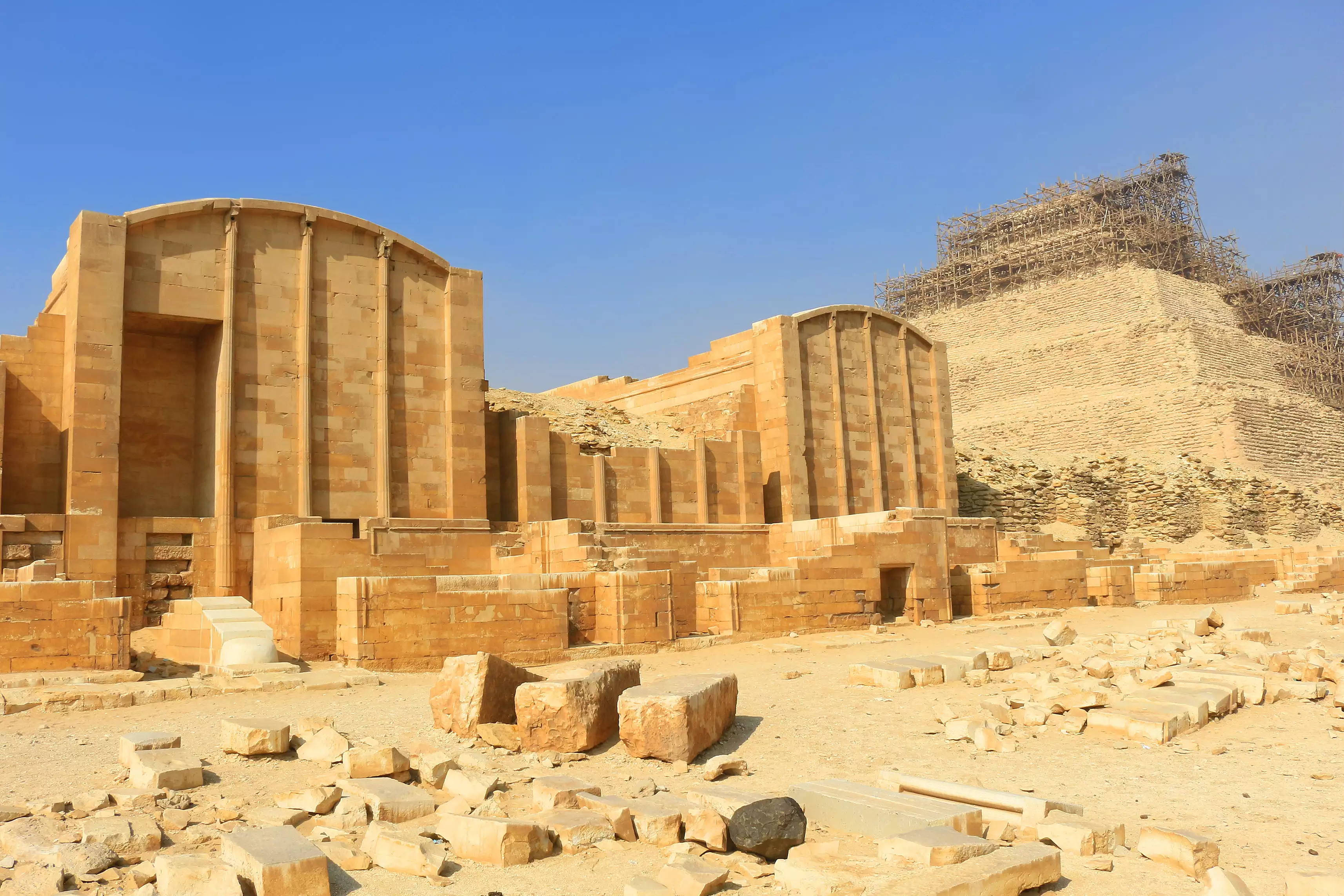
Saqqara complex
Exploring the Saqqara Complex: The Cradle of Egyptian Civilization
Nestled just 30 kilometers south of Cairo lies Saqqara, a vast necropolis that holds the secrets of Egypt’s earliest architectural and cultural innovations. Known as the birthplace of pyramid construction, Saqqara is home to the iconic Step Pyramid of Djoser and an array of tombs, temples, and pyramids that span millennia. This UNESCO World Heritage Site offers visitors a window into the evolution of ancient Egyptian civilization.
A Step into History: The Step Pyramid of Djoser
The centerpiece of the Saqqara complex is undoubtedly the Step Pyramid of Djoser, built during the Third Dynasty (c. 2670 BCE) for Pharaoh Djoser. Designed by the legendary architect Imhotep, this structure is recognized as the world’s first monumental stone building. Unlike later pyramids, the Step Pyramid consists of six stacked mastabas (rectangular structures), symbolizing a bold departure from traditional tomb design.
Visitors to the Step Pyramid can marvel at its unique architecture and explore the surrounding funerary complex, which includes courtyards, ceremonial halls, and the famed serdab chamber, where a statue of Djoser gazes eternally toward the afterlife.
The Tombs of Saqqara: Stories Etched in Stone
Saqqara is not just about pyramids; it’s a repository of elaborately decorated tombs belonging to nobles, officials, and high priests. The Tomb of Ti and the Mastaba of Mereruka are among the most famous, featuring vibrant wall carvings and paintings depicting scenes of daily life—farming, fishing, and feasting—that provide invaluable insights into ancient Egyptian society.
For a glimpse into royal burial traditions, visit the Pyramid of Unas, where you can witness the earliest examples of the Pyramid Texts: hieroglyphic inscriptions designed to guide the pharaoh to the afterlife. These texts later evolved into the Book of the Dead, a cornerstone of Egyptian funerary beliefs.
Hidden Gems of Saqqara
Beyond its renowned monuments, Saqqara holds treasures that many visitors overlook. The Imhotep Museum, located near the entrance, showcases artifacts discovered at the site, including statues, tools, and the intricately carved false doors found in tombs.
Another must-see is the Serapeum, a massive underground gallery where sacred Apis bulls were interred in granite sarcophagi. These animals were worshipped as incarnations of the god Ptah, and their burial chambers reflect the grandeur of their divine status.
Saqqara Today: A Modern Connection to Ancient Egypt
Thanks to ongoing archaeological work, Saqqara continues to reveal new secrets. In recent years, remarkable discoveries, including intact tombs and well-preserved mummies, have added to our understanding of ancient Egyptian life and beliefs. These findings make Saqqara a dynamic site where history is continually being rewritten.
Tips for Visiting Saqqara
Getting There: Saqqara is a 45-minute drive from Cairo and is best visited as part of a guided tour to fully appreciate its historical significance.
What to Wear: Comfortable walking shoes and a hat are essential, as the site covers a vast area and has limited shade.
Photography: Don’t forget your camera! Saqqara offers unparalleled opportunities for stunning photographs.
Timing: Visit early in the morning to avoid the midday heat and enjoy a quieter experience.
Conclusion
Saqqara is more than just an archaeological site; it is a living testament to the ingenuity and spirituality of ancient Egypt. From the pioneering Step Pyramid to the richly adorned tombs, every corner of Saqqara tells a story of innovation, reverence, and the quest for immortality. For history enthusiasts and casual travelers alike, a visit to the Saqqara complex is a journey into the heart of Egypt’s illustrious past.
So, lace up your shoes, grab your camera, and prepare to be transported back in time at the mesmerizing Saqqara complex.

